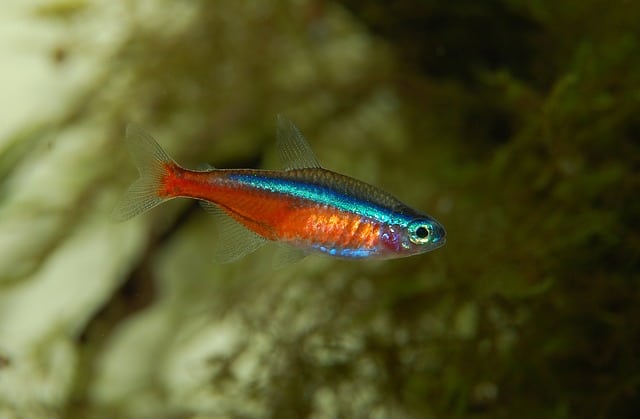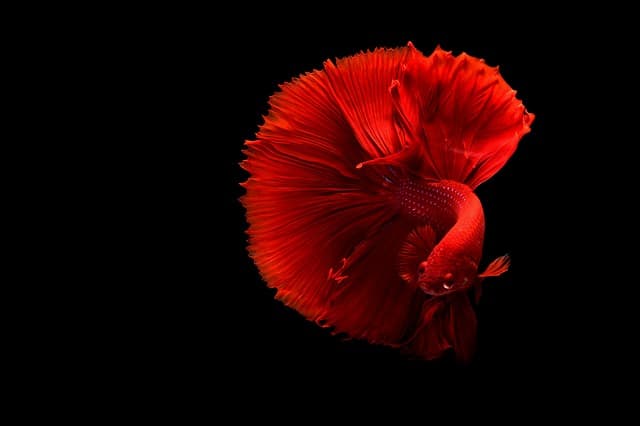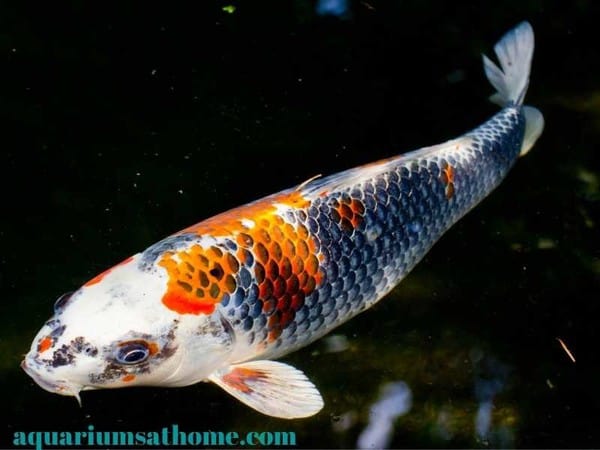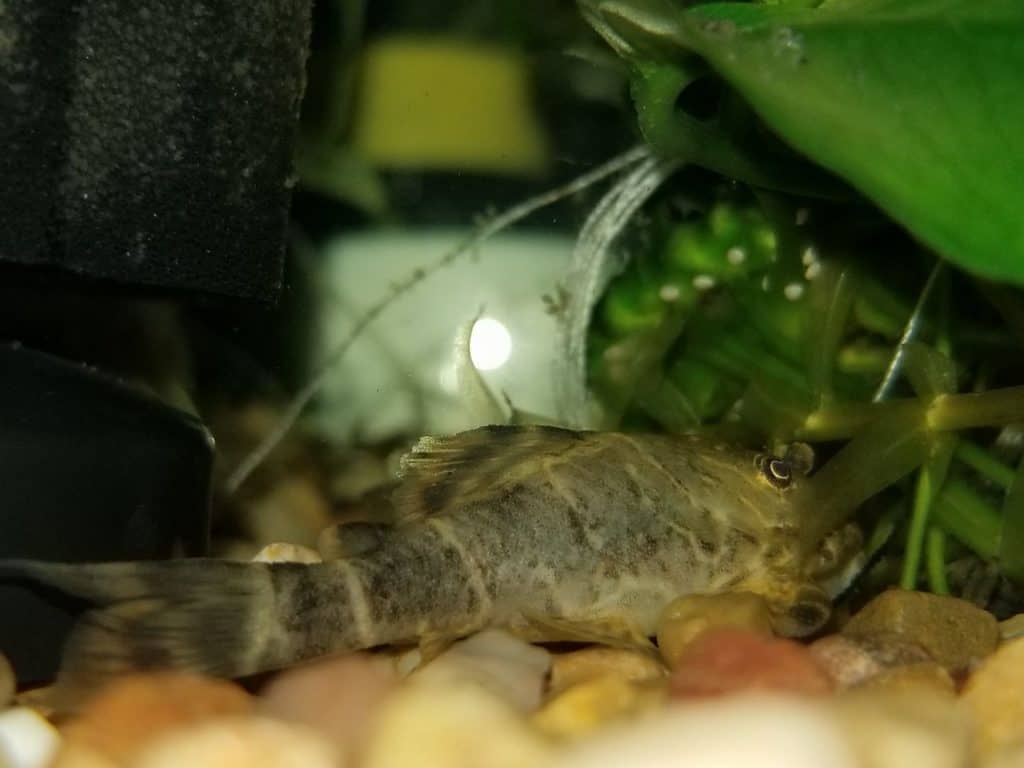Mollies a popular aquarium fish. Native to the warm tropical waters off the coast of Florida and Hawaii – as well as the freshwater streams and coastal brackish waters of Mexico – their active nature combined with their interesting behaviors and unique personalities make them highly sought after by experienced aquarium hobbyists. But are they a good starter fish?
Mollies are hardy and easy to care for making them a great starter fish for beginner aquarium hobbyists. They have a peaceful nature and get along well with most other fish. They’re also highly adaptable to varying water conditions and can live in fresh, brackish and even saltwater tanks! Molly fish also eat algae in an aquarium, helping to keep the water in the tank clean.
Now that you know molly fish are easy to maintain and good for novice aquarium hobbyists, let’s take a closer look at this unique and attractive fish in more detail. In this article, I’ll explain how to care for mollies as well as the types, temperaments, and mating habits associated with this species. I’ll even include examples of possible tank mates for molly fish.
So, if you’re ready to learn more about the ever popular and low maintenance molly fish, then let’s begin!
Are Molly Fish Good for Beginners?
Molly fish are ideal for beginner aquarium hobbyists. Their innate ability to thrive in different aquatic conditions makes them one of the best (and easiest) freshwater fish to keep. They can even survive in brackish water and saltwater aquariums! They also come in a variety of shapes and colors and only grow to about 4 inches in length, making them ideal for smaller 10-gallon tanks.
Molly fish are also easy to feed and live mainly on a diet of live plants and algae. By feasting on the greenery in the tank, they help to keep the water clean and the aquatic environment balanced. An overgrowth of algae can not only make the aquarium look dirty, but it can also negatively affect the water parameters, thus affecting the overall health of the tank’s inhabitants.
How to Care for Molly Fish?
Though highly adaptable and generally easy to care for, molly fish require specific care to not only survive, but thrive in an aquarium. These include the following:
A Heater
Mollies are tropical freshwater fish and therefore prefer warmer water. The temperature in the tank should be kept as consistent as possible, somewhere between 72 degrees and 78 degrees Fahrenheit or 22 to 25 celcius. As well, the pH should range between 7.0 and 8.5 with a hardness between 20 and 30 KH. Brackish water conditions with a slightly higher pH and alkalinity level will also work for mollies.
A Filter
Since molly fish can adapt to changing water conditions, a filter is recommended, though not necessarily needed. Filters help keep the water clean and clear as well as remove toxins and waste from the tank. If you opt out of getting a filter, then you must be prepared to do partial (20%) water changes weekly. As well, if you keep mollies in a larger tank that’s well-maintained, then you may not require a filter.
A Water Pump or Air Stone
Mollies thrive in water that’s well-oxygenated. Therefore, a water pump or air stone is a must. Proper aeration in the water provides for a healthy aquatic environment, not only for molly fish, but for all other inhabitants as well. If the oxygen levels in the water drop too low, mollies will become lethargic, sick, and (eventually) die.
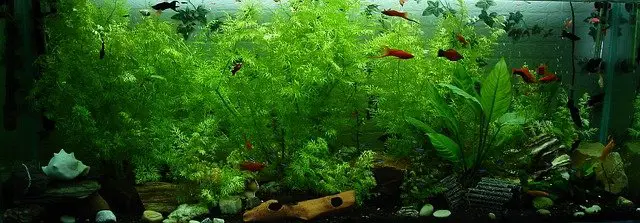
Live Plants
As mollies like to nibble on algae and greenery in a tank, live plants are necessary. Not only do they act as a food source for mollies, but they also provide shelter and safety in a community tank environment. The best live aquarium plants include Vallisneria and Sagittaria, which are both types of exotic grasses. Najas or guppy grass also works well in an aquarium with molly fish.
Good Food
Molly fish are omnivores and should only be fed once a day with fine-grind, high-quality fish flakes – as they’ll also graze on plants and/or algae growing naturally in the tank. Hikari Micro Wafers are a great choice for mollies and are available online through Amazon or in-store at your local pet shop. They’ll also feast on small invertebrates such as snails or crab in an aquarium.
Other Mollies
Mollies are a type of schooling fish and as such, need the company of other mollies to thrive in an aquarium. Ideally, you should keep molly fish in a tank no smaller than 10 gallons – a 30-gallon tank is better and will allow them more space to live comfortably. Keeping mollies in groups of 5 or 6 (depending on the size of your tank) is recommended with more females than males, if possible.
Are Mollies Friendly Fish?
This peaceful schooling fish is ‘friendly’ in nature and will do well in a community tank – if kept in a group of 5 or 6 of its own kind. They can get aggressive around food or if not provided with enough plants or hiding places for safety. If placed in too small of an aquarium, they can become territorial in an effort to defend their home.
Are Mollies a Clean Fish?
While mollies aren’t necessarily a ‘cleaner’ fish perse, they do help keep an aquarium tidy. As an algae-eating fish, they prevent greenery in the tank from growing out of control and thus altering the water parameters. They’re also stay fairly small, so they produce less waste than larger aquarium fish. They also don’t uproot plants or disturb the substrate like cichlids or goldfish.
Do Molly Fish Breed Easily?
Mollies will breed quickly in captivity. As livebearers, a single female can have up to 100 fry at a time, though the average is somewhere 40 and 60 offspring. Since the gestation period for mollies is up to 60 days, females can store sperm for months and even fertilize eggs without a male is present in the tank! Amazing, isn’t it?
Do Molly Fish Die Easily?
Mollies are a hardy species and can adapt to fluctuating water conditions better than most other freshwater fish. That said, if the water is lacking in oxygen or the temperature rises or falls outside of the acceptable range, mollies will get sick and/or die. Using untreated tap water when doing water changes can be problematic and adversely affect molly fish health as well.
How Do You Save a Dying Molly Fish?
To save a sick or dying molly fish, begin by removing it from the community aquarium and placing it in a quarantine tank/fishbowl. Make sure to properly filter and treat the water first. Tap water should be administered with a special water conditioner and a pinch of marine salt before immersing the fish. Go online and check out the following on Amazon: API Tap Water Conditioner and API Aquarium Salt.
What Can You Put with Mollies?
A docile and friendly fish, mollies make excellent tank mates for other peaceful aquarium fish. Possible tank mates to consider include cory catfish, danios, endlers, guppies, gouramis, platies, rasboras, tetras, swordtails, and barbs, just to name a few. There are likely more tankmate options for mollies – just remember to choose fish of similar size and disposition whenever possible.
Conclusion
To conclude, mollies are indeed a good starter fish for new aquarium hobbyists as they’re hardy and easy to care for. Highly adaptable to diverse water conditions, including those of fresh, brackish, and saltwater aquariums, mollies have a peaceful demeanor and get along well with other fish. They also eat algae in an aquarium, which helps to keep the water in the tank clean and the cost of food down.
I trust this article has provided you with plenty of information regarding the care and maintenance of the attractive and unique molly fish. Thanks for reading and good luck with your aquarium hobby.
Related Posts
Are Discus Hard to Care For? [What You Must know]
Neon Tetra Fish Care Guide for Freshwater Aquarium Beginners
Will Mollies and Platies Breed?



